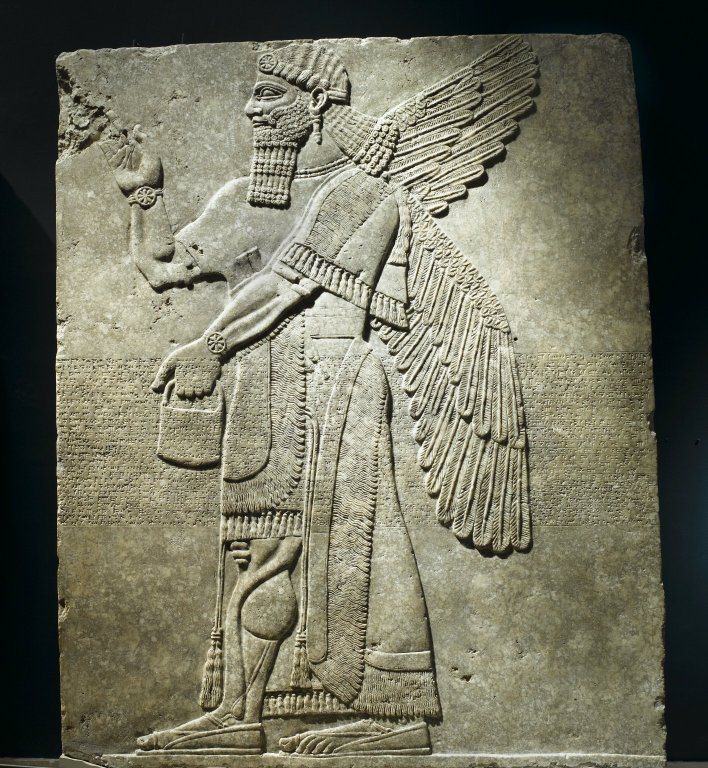Шумерское

Figure of a Recumbent Lamassu
Neo-Sumerian
Musée du Louvre

Relief
Assyrian, 883-859. The Brooklyn MuseumВесь в часах :-)

Panel with Striding Lion
Neo-Babylonian 604-652
The Metropolitan Museum of Art

Glass Jar
Neo-Assyrian, 750-550 BC
The British Museum

Brick
Neo-Assyrian
The British Museum

Blessing Genius
Neo-Assyrian, 721-705 BC
Musée du Louvre

Jar
Assyrian, 1900-1600 BC
The British Museum

Handle
Neo-Assyrian, 8th century BC
The Metropolitan Museum of Art

Prism Recounting the Deeds of Ashurbanipal
Neo-Assyrian, 668-627 BC
Musée du Louvre

Statue
Neo Assyrian, 811-792 BC
The British Museum

Tile
Neo Assyrian, 883-859 BC
The British Museum

Column
Neo-Assyrian, 675-670 BC
The British Museum

Breastplate
Neo-Assyrian, 800-500 BC
The National Museum of Asian Art

Statuette of Pazuzu
Assyrian, beginning of the 1st millennium BC
Musée du Louvre

Chair Back with Tree Pattern
Neo-Assyrian, 8th century BC
The Metropolitan Museum of Art

Tribute-Bearer with an Oryx, Monkey, and Leopard Skin
Neo-Assyrian, 8th century BC
The Metropolitan Museum of Art

Bronze Head of Pazuzu
Neo Assyrian, 800-550 BC
The British Museum

Guardian Figure from the Northwest Palace of Ashurnasirpal II
Assyria, 883-859 BC
The British Museum
“This is one of a pair of guardian figures set up in the palace of Ashurnasirpal II (883-859 BC) at the Assyrian capital Kalhu. Its partner is now in the Metropolitan Museum, New York.
Stone sculptures of mythological figures, sculpted in relief or in the round, were often placed as guardians at gateways to palaces and temples in ancient Mesopotamia. These figures were known to the Assyrians as lamassu. They were designed to protect the palace from demonic forces, and may even have guarded the entrance to the private apartments of the king. The figure has five legs, so that when viewed from the front it stands firm, while when viewed from the side it appears to be striding forward to combat evil. The ‘Standard Inscription’ of Ashurnasirpal, common to many of his reliefs, is inscribed between the figure’s legs. It records the King’s titles, ancestry and achievements.”

Quiver Cover
Neo-Assyrian, 9th-8th century BC
The Metropolitan Museum of Art

Kudurru of Meli-Shipak commemorating a gift of land to his daughter Hunnubat-Nannaya
Mesopotamian, 1186-1172 BC
The Louvre


Ishtar Gate, Staatliche Museum, Berlin
Named in honor of Ishtar, the goddess of love, fertility, and war, the gate spanned a processional route that led to the city’s towering ziggurat incorporated into the Tower of Babel.

Victory Stele of Naram-Sin

Stele of Hammurabi

Мир

Война.
Standard of Ur
Peace and war panels

Sumerian votive statues